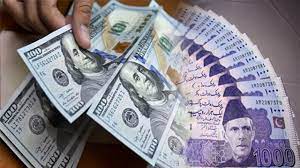1 USD to PKR
The exchange rate between the US Dollar (USD) and the Pakistani Rupee (PKR) is a topic of significant interest for economists, investors, travelers, and anyone engaged in international trade. In this comprehensive guide, we delve into the various aspects that influence the 1 USD to PKR exchange rate, providing a detailed analysis to help you understand this dynamic financial metric better.
The Importance of Exchange Rates
Exchange rates are crucial in the global economy as they determine the relative value of different currencies. The USD to PKR exchange rate is particularly important for several reasons:
- Trade and Commerce: Pakistan relies heavily on imports for various goods, including machinery, electronics, and consumer products, often priced in USD.
- Remittances: A significant portion of Pakistan’s foreign exchange comes from remittances sent by overseas Pakistanis.
- Investment: Foreign investors looking to invest in Pakistan need to convert their currency, impacting the exchange rate.
- Tourism: Travelers from the United States to Pakistan and vice versa are affected by the exchange rate.
Factors Affecting the USD to PKR Exchange Rate
Several factors influence the USD to PKR exchange rate, including:
1. Economic Indicators
Economic indicators such as GDP growth, inflation rates, and employment levels in both the United States and Pakistan play a pivotal role. For instance, a strong GDP growth in the US can strengthen the USD, while high inflation in Pakistan can weaken the PKR.
2. Monetary Policy
The monetary policies of the Federal Reserve (Fed) and the State Bank of Pakistan (SBP) significantly impact the exchange rate. Interest rate changes, money supply, and other monetary tools can either appreciate or depreciate the currencies.
3. Political Stability
Political events and stability are major influencers. Political instability in Pakistan can lead to a depreciation of the PKR, while political stability tends to strengthen the currency.
4. Market Speculation
Forex markets are highly speculative. Traders’ perceptions and actions based on expected future economic conditions can cause short-term fluctuations in the exchange rate.
5. Balance of Payments
A country’s balance of payments, including trade balance and foreign investments, affects its currency value. A trade deficit in Pakistan, where imports exceed exports, can lead to a weaker PKR.
Historical Trends of USD to PKR
To understand the USD to PKR exchange rate better, it’s essential to look at historical trends. Over the past decade, the PKR has seen significant depreciation against the USD. Factors such as political instability, economic challenges, and global financial crises have contributed to this trend.
Current Exchange Rate Scenario
As of [current date], the exchange rate stands at approximately 1 USD = [current rate] PKR. This rate is subject to continuous change based on the factors mentioned above.
Impact of Exchange Rate on Different Sectors
1. Importers and Exporters
Importers benefit when the PKR strengthens against the USD, as they need to spend fewer rupees to purchase USD-priced goods. Conversely, exporters benefit from a weaker PKR as their products become cheaper for foreign buyers. Also, know about the exchange rate between the dollar to pkr.
2. Remittance Receivers
A weaker PKR means more rupees for every dollar sent by overseas Pakistanis, benefiting remittance receivers. However, a strong PKR would reduce the amount received in local currency.
3. Investors
Foreign investors gain more when the PKR is strong, as their investments have a higher value. Domestic investors in foreign assets, however, prefer a strong USD.
4. Travelers
Travel costs for Pakistanis traveling to the US increase when the PKR is weak, as they need more rupees to buy USD. Conversely, US travelers find Pakistan cheaper when the PKR depreciates.
Strategies to Manage Exchange Rate Risks
Businesses and individuals can employ several strategies to mitigate the risks associated with fluctuating exchange rates:
1. Hedging
Hedging involves using financial instruments like forward contracts and options to lock in exchange rates for future transactions, providing certainty and reducing risk.
2. Diversifying Income Sources
For businesses, diversifying income sources by exploring different markets can reduce dependency on a single currency, spreading the risk.
3. Keeping Reserves
Maintaining a reserve of foreign currency can provide a buffer against unfavorable exchange rate movements.
4. Monitoring and Forecasting
Regularly monitoring exchange rate trends and employing economic forecasting can help anticipate and prepare for future changes.
Conclusion
Understanding the intricacies of the USD to PKR exchange rate is essential for anyone engaged in activities influenced by international currency movements. By analyzing the factors that affect this exchange rate, keeping an eye on historical trends, and implementing risk management strategies, businesses and individuals can make more informed decisions.




